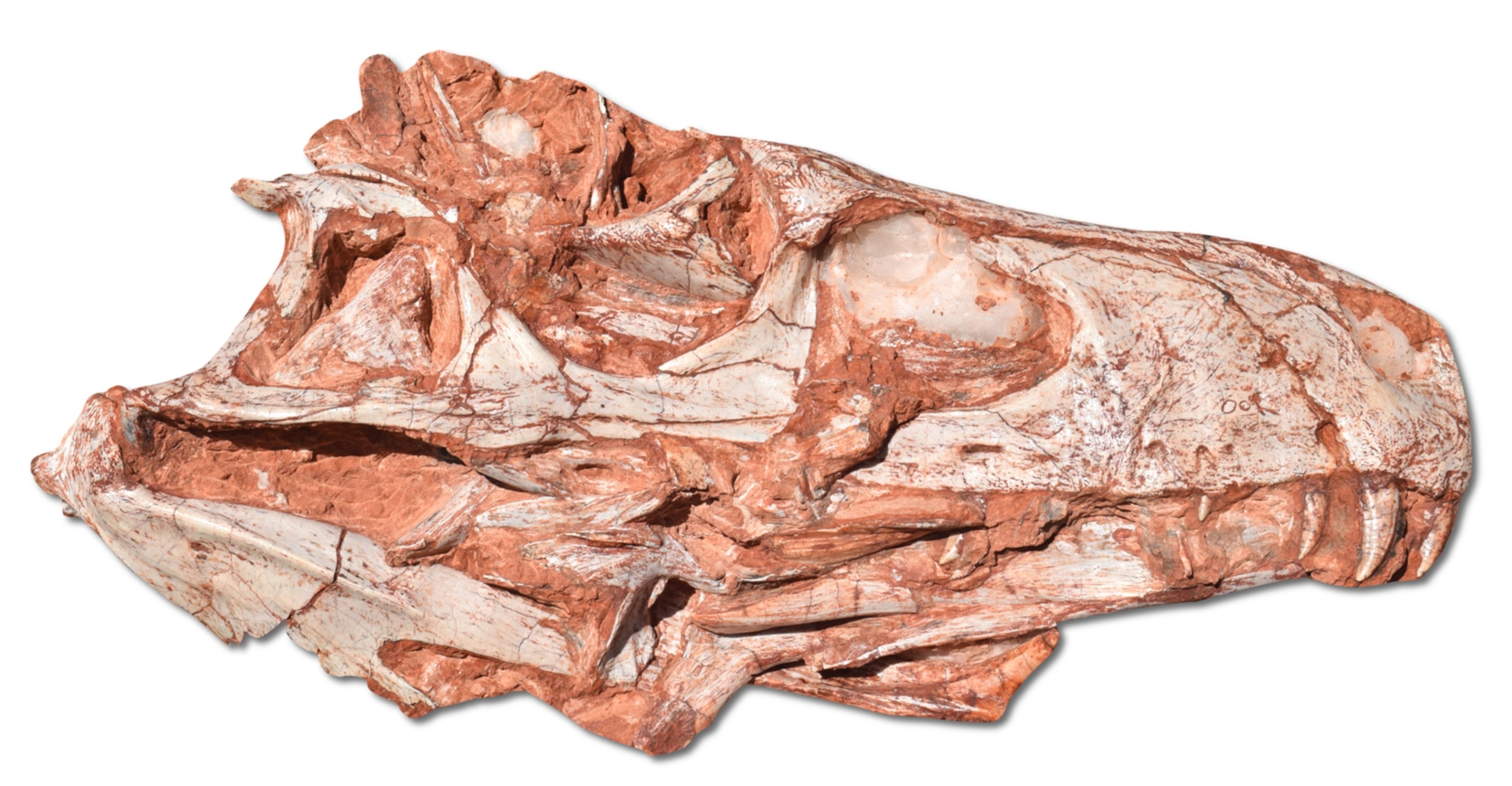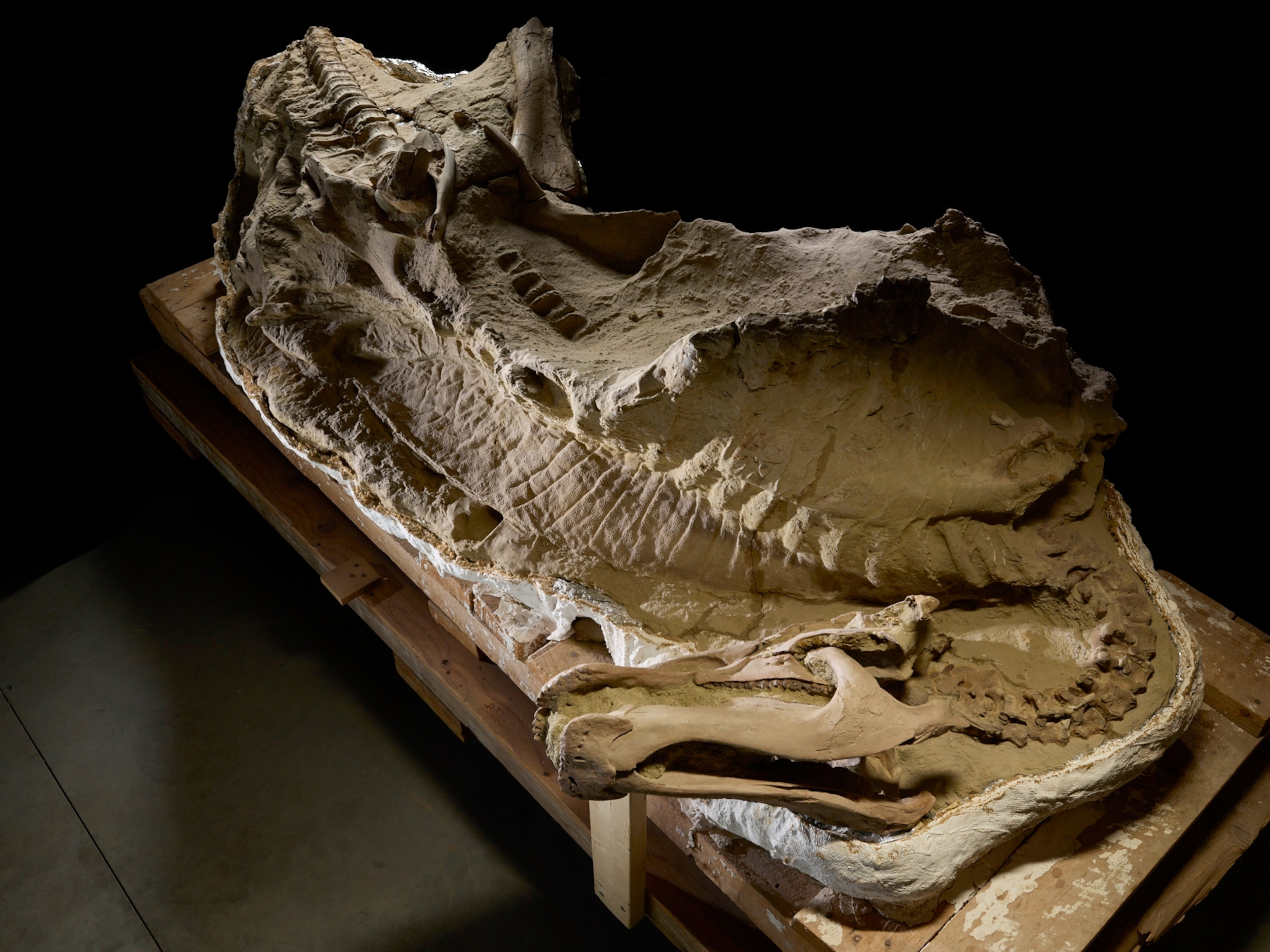SÃO PAULO, Brazil — Paleontologist Rodrigo Muller was working in a nearby town in 2014 when his team members started sending him photos of the remarkable fossils.
“You could already see the femur, part of the head, the cranium,” says Muller, who was finishing his degree at the time. “We practically don’t have this type of dinosaur here. It’s very rare, and it was so exciting.”
Unearthed in the southern Brazilian town of São João do Polêsine, the fossils would turn out to belong to one of the oldest carnivorous dinosaurs known in the world. Dated to 230 million years ago, the newly named Gnathovorax cabreirai lived in a forested area during the Triassic period, when South America was still part of the supercontinent Pangaea.
The animal died in a flood plain, allowing sediment from a nearby river to cover its skeleton and create a stunningly intact fossil, which Muller and colleagues from the Federal University of Santa Maria and the University of São Paulo have now described in the journal Peer J.
The nearly perfect preservation of the dinosaur’s bones includes an undamaged brain case, an extremely rare find that allowed the team to reconstruct the dinosaur’s brain with CT scans. The structure reveals that this species was an active predator with good vision, focus, and balance, traits that helped it use its sharp, serrated teeth and long claws to capture its prey. (Also see a piece of fossilized brain tissue from a Cretaceous dinosaur.)
The fossil also bears visible scars at muscle insertion points, which will allow the team to eventually reconstruct its musculature to understand how it moved and got around.
“Now, when we go to study the anatomy of other dinosaurs, this will most definitely act as a basis for that work,” Muller says.
A family affair?
Gnathovorax cabreirai measured almost 10 feet long, making it the biggest Brazilian dinosaur of its time. Buriolestes schultzi, another carnivorous dinosaur that would have lived alongside it, was only half its size.
Gnathovorax cabreirai belongs to a very early family of carnivorous dinosaurs called the Herrerasauridae, which were among some of the first dinosaurs known to exist. While scientists have debated whether this line gave rise to the famous apex predators of the Jurassic and Cretaceous, like Tyrannosaurus rex, the discovery of Gnathovorax cabreirai instead suggests that they belonged to different lineages. (Meet Scotty, the biggest T. rex known in the world.)
Still, Gnathovorax cabreirai may have played an important role in shaping creatures even closer to our hearts: mammals. Alongside the dinosaur's bones, paleontologists found the skeletons of two rhynchosaurs, a group of Triassic reptiles that were likely part of the carnivore's diet, and two cynodonts, ancestors to today’s mammals. (Find out more about the rise of mammals.)

“Gnathovorax was one of the evolutionary forces that pushed those cynodonts into the niche of small nocturnal animals, a lineage from which 233 million years later would be born the first beings with sufficient intelligence to extract from the rock and study the Gnathovorax skeleton,” says Luiz Eduardo Anelli, a paleontologist at the University of São Paulo who was not involved in the new work.
The last Brazilian dinosaur discovered from the Herrerasauridae group, Staurikosaurus pricei, was a small and agile carnivorous species found in the same sedimentary rock formation in 1936. While its skeleton is now on display at Harvard University’s Museum of Comparative Zoology, the bones of Gnathovorax cabreirai won’t travel quite as far; the fossil will remain at UFSM’s Fourth Colony Paleontological Research Support Center in São João do Polêsine.






